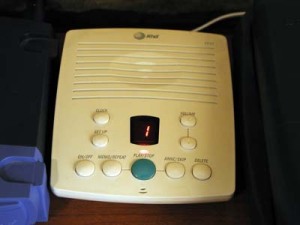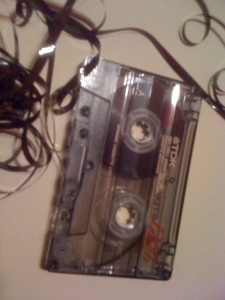Remember your first answering machine?
I do.
In the days when I was still watching new episodes of Thundercats, if someone called and no one was home, or if someone was home but was in the shower and did not hear the phone ring, or if they did hear it ring but were afraid of getting electrocuted by picking up the phone with a wet hand, then the phone just rang and rang until the caller got tired of hearing the phone ring and went off to do something more productive with his or her life.
Close your eyes for a moment and try to imagine what it was like not being able to record a message with your voice on it. Imagine the inconvenience. Imagine the missed opportunities. Imagine the bliss.
Answering machines were marketed upon the assumption that you wanted to receive telephone calls. But not all calls are wanted. If you don’t pick up your phone and the caller leaves a message, you have no recourse. When you don’t return the call or do what was asked, the caller can say, “Well, what you mean you didn’t return the 500 fake birds and tree branches we ordered for my baby shower? I left you a message.” You can run, but you can’t hide.
Before answering machines, however, you could let the phone ring, and ring and ring and ring, and with each ring sense that the caller was getting tired, like a boxer hanging against the ropes in the tenth round, and would eventually go away. And when the phone stopped ringing, that was it. You could continue watching the Flintstones Meet the Jetsons or whatever, safely insulated from any constructive knowledge that you were supposed to call someone back or perhaps even do something for someone.
And then one day it all ended. They invented these machines upon which you would record a message. I remember my band director’s answering machine played a steel drum band version of the theme from “Peanuts” that I heard about fifteen times when I tried to tell him that I was going to miss the Memorial Day parade because my cat was stuck behind the dryer.
My father’s greeting was robot-style. “I can’t come to the phone right now, but please leave your name, tel-e-phone number, and brief mes-sage after the tone. Here is the tone.” And true to his word there would be a tone.
My grandparents called leaving messages “talking into the machine” and they would shout into it as if the answering machine was hard of hearing, just like all of their neighbors at Westwood 21 in Ft. Lauderdale.
People today are so used to leaving messages that they speak onto the digital medium just as if they were talking to me in person. That is why I have no trouble ignoring them.
Thanks to Maria for the topic. She does a great treatment of it here.



